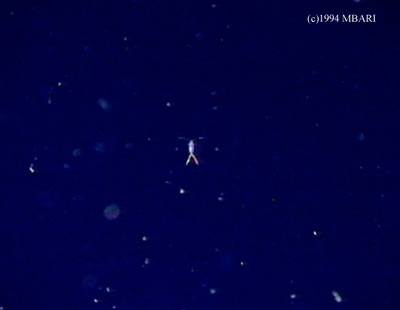




The Copepoda are an incredibly numerous group of crustaceans. There are approximately 9000 species with an average size range of 0.5 to 15 mm. The largest copepods are parasitic ones that can reach as much as 25 cm in length. As with many groups, copepod systematics are under revision so as we learn more, there will be changes in the classification.
There are currently 10 groups of copepods. Most members of seven of those groups are parasites on other invertebrates or fish. These parasitic groups exhibit a tremendous amount of morphological diversity and possess many amazing specializations for their parasitic life styles.
The three groups that are most often free-living, and thus most likely to be the copepods you have encountered, are Calanoida, Harpactacoida, and Cyclopoida. The Harpactacoida are primarily benthic evident by their vermiform (worm-shaped) bodies. The Calanoida and Cyclopoida are primarily planktonic and both are extremely important in food webs.
